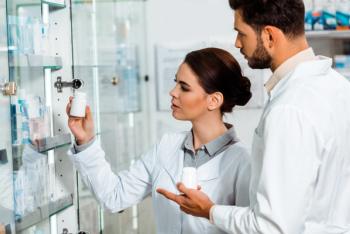
- Volume 0 0
Compounding with Commercial Drugs Can Cause Errors
Compounding using commercialdrugs as the source of medicationcan result in medicationerrors being inadvertently committed.
The standard for the allowed variationin compounded preparations is 90% to110% of the active ingredient, as presentedin the United States Pharmacopeia(USP). This range of the labeledcontent must be met unless there is aspecific monograph in the USP with a differentstandard that may be eithergreater than or less than the + 10%.
As an example, if hydrocortisone gelUSP or hydrocortisone lotion USP is compounded,the requirement is + 10%; but,if amoxicillin capsules USP are appropriatelycompounded, the range is from90% to 120%. The standard for procainamidehydrochloride injection USP itis 95.0% to 105.0%, and for riboflavininjection USP it is from 95.0% to 120.0%.
Most USP product monographs, however,as compared with substancemonographs, have the standard rangefor both manufactured products andcompounded preparations as 90.0% to110.0%.
As pharmacists, we only know thatcommercial products must meet eitherthe USP or FDA specifications. What wedo not know is if the tablets, capsules,etc, used in compounding contain 90.1%of the drug or 109.9% of the drug (almosta 20% difference); or even 119% of thedrug, as given in the amoxicillin exampleabove. Consequently, even thoughextreme care is taken during a compoundingprocedure, the final compoundedpreparation may be "out ofspecification" and may not meet therequired standards.
For example, if a commercial productcan contain 90.0% to 110.0% activedrug, and compounding pharmacists areallowed a 90.0% to 110.0% variationresulting from weighing, manipulations,etc, then the overall variations that maytheoretically occur are 81% (0.90 x 0.90= 0.81) and 121% (1.10 x 1.10 = 1.21).
So, we now have a potential range of81.0% to 121.0% that may occur if boththe commercial product and pharmacymanipulations were in the low end andthe opposite if both entities were workingat the high end. It should be noted,however, that the USP standard does notrecognize this as an option, and therange of 90.0% to 110.0% for compoundingis the standard.
Another potential source of compoundingerror in intravenous admixture programsis "overfill" that is allowed inampoules, vials, and large-volume parenterals.For example, in a 1-mL containerof an injection, an excess of 0.1 mL for amobile liquid and 0.12 mL for a viscous liquidis allowed (10% or 12%).
For a 10-mL vial, the recommendedexcess is 0.5 mL for a mobile liquid and 0.7mL for a viscous liquid. For containers largerthan 50 mL, the excess may be 2% formobile liquids and 3% for viscous liquids.
As is evident, it becomes important toaccurately measure the quantity of drugrequired and not simply use the entirecontents of the container (vial, ampoule,etc).
In the case of large-volume parenterals,when adding the exact quantity ofdrug, the actual "concentration" may beless than what is ordered due to theoverage allowed in the 5% dextroseinjection or the 0.9% sodium chlorideinjection. It is important to determine ifthe "concentration" is critical (and relatedto the rate of administration), or if the"total quantity of drug administered" isthe critical factor.
Obviously, if USP-NF or equivalent-gradebulk substances are used, thepharmacist is starting with substanceswith a standard generally ranging from98.0% to 102.0%. The Certificate ofAnalysis is also available to provide theassay results for the specific lots of eachsubstance that can be used for calculations,etc, during the compoundingprocess.
The bottom line: bulk substances arethe only rational source of drugs for allcompounding activities, unless they arenot available. Excipients in commercialdosage forms also can contribute tocompatibility and stability problems aswell as elegance and compliance considerations.
Lastly, plastic disposable syringes aredesigned to measure the quantity of a finishedproduct or preparation. They arenot designed to measure "ingredients"for compounding. If used for compoundingintravenous admixtures or otherpreparations, they should be checked andcalibrated prior to use, because this canbe another potential source of error.
Dr. Allen is editor-in-chief of theInternational Journal of Pharmaceutical Compounding.
This article was contributed by: International Journal of Pharmaceutical Compounding and CompoundingToday.com
Articles in this issue
about 19 years ago
Cold Sore Outbreak?about 19 years ago
compounding HOTLINEabout 19 years ago
can you READ these Rxs?about 19 years ago
Time to Share Accountabilityabout 19 years ago
nacds SPEAKS OUT: One Voice Is Critical in Pharmacy Todayabout 19 years ago
Use of Probiotics in the Management of Antibiotic-associated Diarrheaabout 19 years ago
Labeling in Failure-to-Warn Caseabout 19 years ago
Ohio Prosecutors Fight Rx Abuseabout 19 years ago
Lean on Me: Help for the Impaired Pharmacistabout 19 years ago
"Milking" Transgenic Animal-Derived DrugsNewsletter
Stay informed on drug updates, treatment guidelines, and pharmacy practice trends—subscribe to Pharmacy Times for weekly clinical insights.















































































































































































































